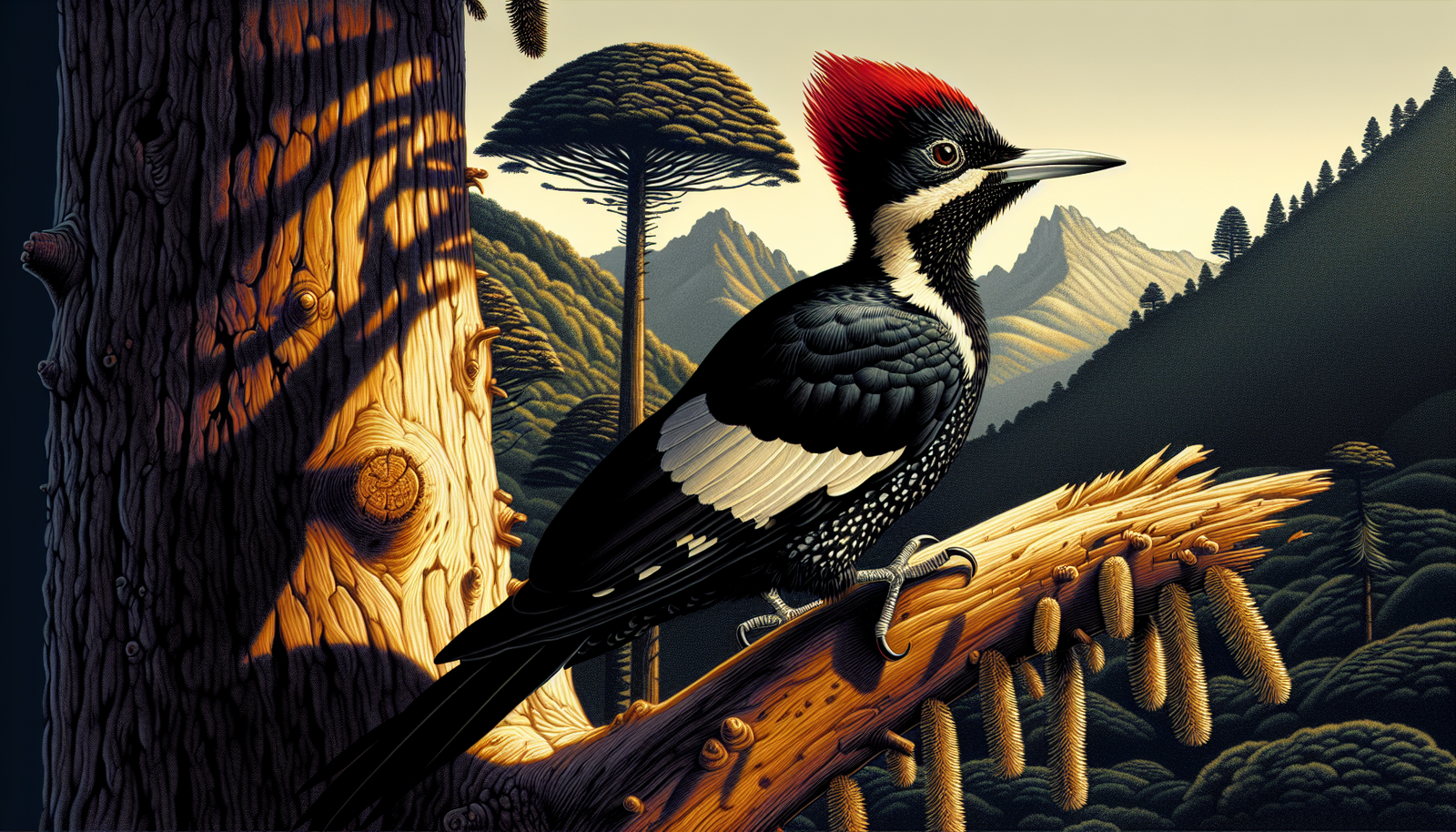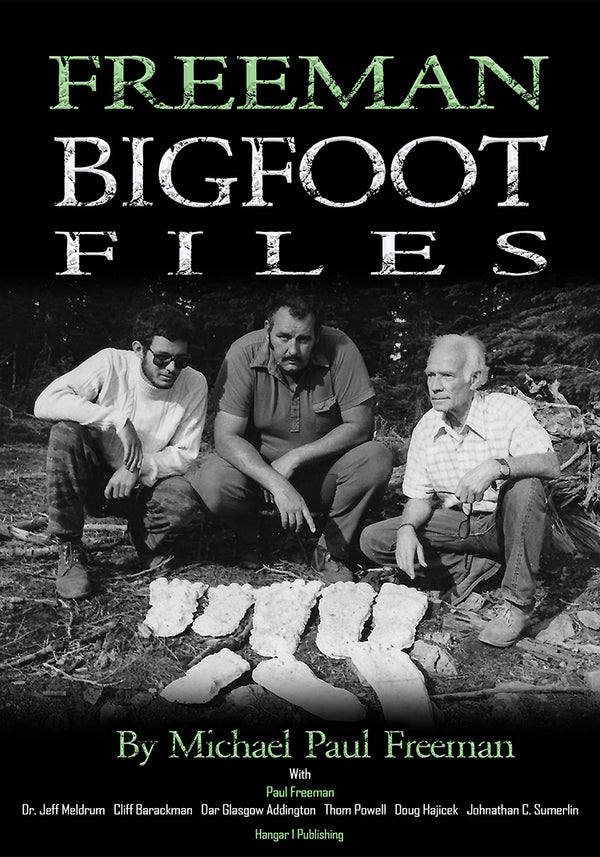The Imperial Woodpecker: Searching for a Ghost in Mexico's Sierra Madre

By Lucas Jennings, Cryptozoologist and Adventurous Naturalist
In the annals of ornithological history, few birds have captured the imagination quite like the imperial woodpecker. This regal ghost of Mexico's Sierra Madre, the largest woodpecker to have ever graced the Earth, now haunts the realm of memory and mystery. Its story is one of majesty and tragedy, a cautionary tale that speaks to the fragility of life on our planet and the urgent need for conservation. As a researcher and adventurer who has long been fascinated by the world's cryptic creatures, I have found myself irresistibly drawn to the enigma of the imperial woodpecker. Join me as we delve into the tale of this magnificent bird, exploring its ecology, cultural significance, and the factors that led to its probable extinction, while holding out hope for its possible rediscovery.
A Regal Ghost of Mexico's Sierra Madre
Picture a bird of superlatives, a woodpecker so grand in size and appearance that it seems almost mythical. The imperial woodpecker, measuring an impressive 22 to 23.5 inches in length, was truly a sight to behold. Males sported a striking red-sided crest, while both sexes boasted large white wing patches and a massive, ivory-colored bill. Endemic to the rugged Sierra Madre Occidental of Mexico, this raven-sized woodpecker made its home in the open, montane pine-oak forests found at elevations between 6,900 and 8,900 feet.
As a specialized feeder, the imperial woodpecker sought out the larvae hidden beneath the bark of dead pine trees. Interestingly, these birds were often observed in groups, a social behavior that may have been linked to their foraging habits. A mated pair of imperial woodpeckers required a vast territory of untouched, mature forest—approximately 10 square miles—to sustain themselves and their offspring.
The imperial woodpecker shares a close taxonomic relationship with the critically endangered ivory-billed woodpecker, another species that has teetered on the brink of extinction. So similar are these two birds in appearance and ecological niche that the imperial woodpecker is sometimes referred to as the "Mexican ivory-billed woodpecker" or simply the "Mexican ivory-bill."
For the indigenous peoples of the Sierra Madre, the imperial woodpecker held a place of cultural significance. The Nahuas knew it as "cuauhtotomomi," while the Tepehuanes called it "uagam," and the Tarahumaras referred to it as "cumecócari." The bird's feathers and bills were used in rituals by the Tepheuana and Huichol tribes, and its nestlings were considered a delicacy by the Tarahumara people. This cultural importance, however, would later contribute to the species' decline.
The Decline and Probable Extinction
The last officially recognized sighting of an imperial woodpecker occurred in 1956, in the state of Durango, Mexico. Since then, the species has been classified as "critically endangered (possibly extinct)" by the International Union for Conservation of Nature (IUCN) and BirdLife International. In a somber acknowledgment of the bird's likely fate, the Mexican government declared the imperial woodpecker extinct in 2001.
Several factors conspired to push the imperial woodpecker to the brink of oblivion. Chief among these was the destruction and fragmentation of its habitat due to intensive commercial logging. The bird's specialized feeding habits and vast territorial requirements made it particularly vulnerable to the loss of old-growth forests. Overhunting also took a heavy toll, as the imperial woodpecker was targeted for sport, food, and medicinal purposes.
Tragically, the imperial woodpecker faced persecution from an unexpected quarter: the very logging interests that were decimating its habitat. In the 1950s, foresters waged a campaign to eliminate the bird, which they perceived as a threat to valuable timber resources. They encouraged local people to smear poison on the trees where the woodpeckers foraged, a tactic that could wipe out entire groups of up to 12 birds in one fell swoop. This baseless premise—that the imperial woodpecker posed a danger to healthy trees—only served to hasten the species' demise, as the bird only foraged on dead wood.
Studying and searching for any surviving imperial woodpeckers presents a daunting challenge. The Sierra Madre Occidental is a rugged, inaccessible landscape, made all the more dangerous by the presence of armed drug cartels guarding their marijuana and opium poppy fields. Researchers and conservationists who venture into this treacherous terrain in hopes of rediscovering the species put their lives on the line in the process.
Glimmers of Hope
Despite the grim reality of the imperial woodpecker's probable extinction, hope persists in the form of sporadic, unconfirmed sightings in recent decades. These reports, often from locals who claim to have spotted the elusive bird, are treated with caution due to the lack of concrete evidence. Interest in the species' possible survival surged in 2005, following the controversial rediscovery of the ivory-billed woodpecker in Arkansas.
One of the most tantalizing clues to the imperial woodpecker's existence comes from a remarkable piece of footage captured in 1956 by amateur ornithologist William L. Rhein. This 85-second film, the only known photographic record of the species, shows an adult female imperial woodpecker foraging, flying, and hitching up tree trunks. Rediscovered and painstakingly analyzed by researcher Martjan Lammertink and his colleagues at the Cornell Lab of Ornithology, the Rhein film offers an invaluable glimpse into the behavior of this enigmatic bird. In 2011, the restored footage was released to the public, igniting the imaginations of bird enthusiasts and conservationists worldwide.
Inspired by the Rhein film and the tantalizing possibility of the imperial woodpecker's survival, intrepid researchers like Tim Gallagher and Martjan Lammertink have mounted expeditions into the heart of the Sierra Madre Occidental. As recounted in Gallagher's book "Imperial Dreams," these expeditions have yielded valuable insights into the bird's history and the factors that contributed to its decline. Interviews with elderly residents of the region, who recall encountering imperial woodpeckers decades ago, have shed light on the species' former abundance and the devastating impact of the 1950s poisoning campaign by logging interests.
Yet, the challenges and dangers of searching for the imperial woodpecker in the Sierra Madre cannot be overstated. The presence of heavily armed drug cartels, who jealously guard their illicit crops and are quick to eliminate any perceived threats, poses a constant risk to those who would seek out this lost species. The rugged, inaccessible terrain itself is a formidable obstacle, requiring a level of physical endurance and resourcefulness that few possess.
The Legacy of the Imperial Woodpecker
The imperial woodpecker's legacy extends far beyond its tragic disappearance. As a keystone species in the ecosystems of the Sierra Madre Occidental, its absence has undoubtedly had ripple effects on regional food webs and ecological communities. The bird's decline serves as a poignant case study in the complex interplay of factors that can drive a species to extinction, highlighting the urgent need for proactive conservation efforts informed by rigorous research and monitoring.
In the realm of culture and art, the imperial woodpecker has become a potent symbol of Mexico's rich natural heritage and biodiversity. Its striking image and haunting story have inspired artists, writers, and filmmakers to capture its essence in various media, from documentaries and books to paintings and sculptures. One particularly poignant tribute is artist Todd McGrain's bronze sculpture of the imperial woodpecker, which stands as a silent sentinel in the forests of the Sierra Madre, a reminder of what has been lost and what we stand to lose if we fail to act.
The imperial woodpecker's tale is also a clarion call for conservation action, a stark reminder of the fragility of life on Earth and the irreversible impact of human activities on the natural world. It underscores the importance of engaging local communities and stakeholders in conservation efforts, recognizing the vital role that indigenous knowledge and traditional practices can play in protecting biodiversity.
Yet, even in the face of overwhelming odds, there are reasons for hope. The slim possibility of a surviving population of imperial woodpeckers in the most remote reaches of the Sierra Madre continues to inspire researchers and conservationists. Efforts to protect the old-growth forests that once housed the species are ongoing, as is the work to raise public awareness and interest in the bird's story and the broader cause of conservation.
Lessons from the Imperial Woodpecker
The story of the imperial woodpecker offers valuable lessons for the future of conservation. It highlights the need for interdisciplinary approaches that integrate insights from the natural sciences, social sciences, and humanities to address the complex cultural, economic, and political dimensions of protecting biodiversity. Investing in research, monitoring, and on-the-ground conservation efforts is crucial, as is the development of proactive strategies to identify and mitigate threats to species before it is too late.
Addressing the underlying drivers of biodiversity loss, such as climate change, habitat destruction, and unsustainable resource extraction, will require a concerted effort on a global scale. Promoting sustainable land use practices and economic alternatives for local communities is essential to creating a world where human needs and the preservation of nature can coexist harmoniously.
Perhaps most importantly, the imperial woodpecker's legacy reminds us of the power of storytelling and the importance of keeping the memory of lost species alive. By sharing the tales of these vanished creatures, we can inspire new generations to cherish the wonders of the natural world and to fight for their protection.
The Enduring Mystery and Majesty
In the end, the imperial woodpecker remains a creature of mystery and majesty, a symbol of the untold wonders that still exist in the wild places of the Earth. Its story haunts us, even as it inspires us to action. The allure of this magnificent bird, the largest woodpecker ever known, lies not only in its physical grandeur but in the very enigma of its existence.
The imperial woodpecker's tale is a testament to the indomitable spirit of those who dedicate their lives to the cause of conservation, who refuse to give up hope even in the face of overwhelming odds. It is a beacon of resilience in a world where the pressures of human development and exploitation threaten to extinguish the very essence of wildness.
From Bigfoot to UFOs: Hangar 1 Publishing Has You Covered!
Explore Untold Stories: Venture into the world of UFOs, cryptids, Bigfoot, and beyond. Every story is a journey into the extraordinary.
Immersive Book Technology: Experience real videos, sights, and sounds within our books. Its not just reading; its an adventure.



























